Two of the most interesting cameras in recent memory – the 645Z and RX100III, at completely opposite ends of the imaging spectrum but both pushing image quality – are arriving this week and I have a fundamental problem: a lack of light. Kuala Lumpur is blanketed in a horrible 100+API haze again that’s eating light and turning the sky into a giant drybox; right after two weeks of fantastic crystal-clear weather during which we had stars every night. I’ve made the most of the windows of opportunity, but in an ideal world I’d have liked to push the dynamic range of the thing a bit more.
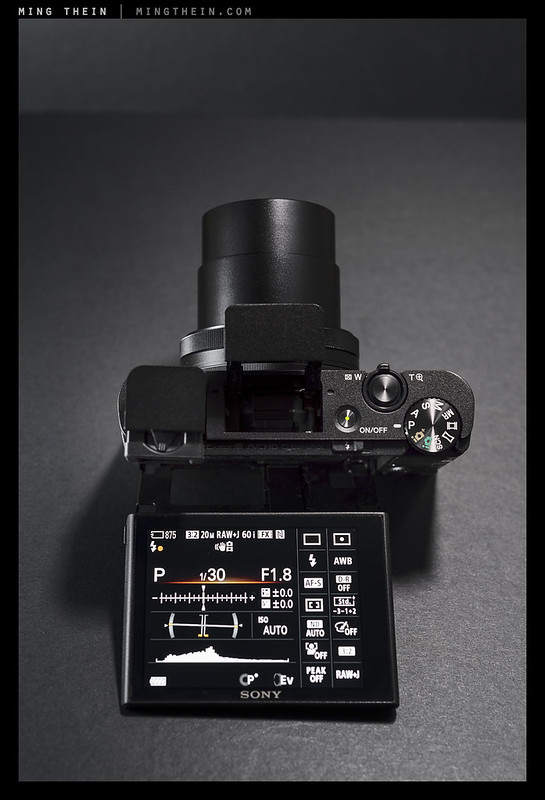
Rear LCD can be made to show shooting info for use with the EVF. Now if only it also had a touch screen to make changes really fast…
First, some background. Those of you who followed this site in the early days will remember I was a big fan of the original RX100 for its flexibility and image quality. You’ll also know that I simply don’t have the time these days to review something that isn’t interesting; if the RX100 series isn’t sufficiency with a capital S in something barely larger than a couple of packs of playing cards, I’m not sure what is. I was constantly thinking its files were from a sensor one size larger. Combine that with very high responsiveness, good color and dynamic range, and you’ve got a spectacular pocket instrument. You’ll probably also recall I thought the IS was rather anemic and the wide end of the lens left a lot to be desired – f1.8 it might have been, but not very useful til f4 or thereabouts. The upshot of all of this is it was primarily deployed as a good light camera – you had to hit ISO3200 pretty quickly, which makes it a good thing that sensitivity was just about usable with some work. And ergonomically, those with smaller hands were left challenged by the tint controls. An accessory grip was almost a must if you didn’t want an expensive accident – the beautiful aluminium ones made by Richard Franiec are solid and ergonomically superb – much nicer than the rubbery stick on piece that Sony tries to sell but should have really been built into the camera.
We gained several things with the Mark II version: a flipping screen, hotshoe with accessory port compatible with EVF and a revised sensor and a few other features. I skipped it and in fact sold my original RX100 after the Ricoh GR release. Not enough difference for most people to upgrade, but still a solid camera in its own right. Interestingly, in this part of the world at least – all three versions remain on sale, but at vastly different price points. The Mark III is 50% more expensive than the Mark I.
The Mark III loses the hotshoe, but adds a pop-up 1.3m dot EVF and a much faster 24-70/1.8-2.8 equivalent lens, a bit wider and faster than the 28-100/1.8-4.9 from the previous camera. It’s also a little thicker and heavier. The flip screen now rotates through 180° for the selfie crowd. It retains the slightly upgraded sensor (still 20.1MP) from the update in the previous RX100II. The fundamental form factor of the camera remains the same – few and very small external controls, mostly programmable, stepless lens ring, a slippery candybar shape and a bit more thickness than can be reasonably pocketed. This means you still really need an add-on grip for the front of the camera for optimum handling; at very least, use the wrist lanyard. Build quality remains excellent, and the moving parts feel solid though the screen could use a bit more resistance or a detent to keep it in the shut/ locked position. The lens barrel is substantial in both size and mass, and has almost no play even when fully extended.
Whilst I was impressed by the build quality and configurability of the menus and controls with the first version, I wasn’t so impressed with the menu system itself: it’s a bit of a mess. The tabs scroll horizontally so you’re never quite sure when a right press is going to give you the next tab, an enter is going to take you back to the shooting screen, or back to the menu. Fortunately once the camera is set up to your liking – in my case RAW, program mode and spot metering with exposure zebras** – you can pretty much leave it and not have to enter it again. And I really wish they’d add detents to the lens ring to make it easier to set things that have discreet values, like aperture or exposure compensation. I can appreciate that the smooth ring is there for manual focus and the video crowd, but this really isn’t the camera for it – firstly, you have very little to no depth of field control in the real world despite the largeish sensor*, and manual focus is pointless when the AF is so good.
*The longest real focal length is 25.7mm at f2.8 with a 2.7x crop factor to full frame – which means in reality you’re really looking at something closer to f6.7-f8 depth of field. At anything other than the closest subject distances, that’s effectively hyperfocal anyway. This is not necessarily a bad thing: there are a lot of situations in which I want more depth of field than I can have without perspective control lenses.
**Flashing/ scrolling diagonal overexposure warning. Though the clipping level is customizable in the menus, it seems that even with the level set to the maximum of 100+ the raw files come out somewhat underexposed. This tells me three things: a low contrast JPEG really isn’t that low contrast, and the sensor has a decent amount of highlight recovery. Finally, the histogram is still necessary, it seems.
As for the EVF: I admit to having very mixed feelings here. Initially, I thought it would be a very useful addition that I’d use all the time; most of you will know I’m a fan of eye level finders for both stability (one additional contact point to brace yourself against) and for how they force you to focus on what’s in the finder – i.e. the subject – and ignore what’s going on outside. I’ll always use the EVF or OVF if possible. However, the finder has two problems: the biggest one is that it simply isn’t bright enough to use outdoors in the tropics, even with brightness set to maximum. Combined with the fact that it’s fairly low in magnification (yes, I know, we forgive it some things because it’s physically small) actually makes it difficult to see. It doesn’t look small or grainy though; the pixel mask is clearly very fine and the high density of the dots means that the image remains crisp. I found myself reverting to using the LCD a lot of the time, partially out of habit, partially because I just couldn’t adequately see the EVF to compose to my satisfaction. Note that the refresh rate of both remains high and fluid even as the light falls. It also acts as a secondary power switch and both powers on the camera when deployed, and powers it off when retracted – this is a clever bit of thinking as it saves you one additional step to getting the camera ready to shoot (but also adds one since you have to pull out the eyepiece).
However, I’d definitely rather have it than not have it: the EVF comes into its own at night, where it’s much stealthier than using the LCD, it definitely aids stability, and it’s plenty visible. You can even turn off the back LCD completely, or have it set to display shooting info. I suspect the former setting – coupled with the eye sensor (no idea where they hid that) that switches the EVF on and off – will be both a fast and power-saving way to photograph. Leave the camera on and set that way to be always ready. The camera also powers on automatically when the EVF is popped up, but note that you’ll have to pull it away from the front of the camera to get the optics in the right position otherwise the image will be blurry. The mechanism itself is quite impressive – it’s pretty solid and has very little play; I wouldn’t be at all worried about damaging it. And they even crammed in a tiny diopter adjustment lever in there.
Overall usability remains good in general, and excellent for a compact – though I’d still consider the Ricoh GR’s UI, physical controls and ergonomics to be the class leader. It’s fast, but not as fast as the GR in deployment, either; the lens is faster to extend than previous versions, but the zoom moves slowly and surprisingly, the screen (or EVF) takes a surprising amount of time to register exposure changes; almost as though the diaphragm is physically slow-moving. Focusing is fast enough that you don’t really notice it. It just does, and does accurately. It slows down a little in low light, but it never really hunted and is much faster than the GR – even after its last firmware update. I suppose it’s because the lens doesn’t need as much helicoid since the real focal length is shorter most of the time. As with all CDAF cameras, you’re not going to be tracking moving objects with it.
Bottom line, if you liked the earlier iterations, you’re going to get on just fine with the RX100III. Not having shot with the Mark II, I found the tilting screen very useful; you can shoot it very stealthily indeed, almost like a tiny Hasselblad (if you set it to square). The folding mechanism could be a bit tighter, though – it’s very easy to accidentally pull away from the back of the camera.
The new lens is a significant improvement on the previous one at the wide end. Even though it goes 4mm wider, resolving power at f1.8 is really quite good, almost out to the corners. The old lens required f4 to match it. Things aren’t quite as good at the tele end, however: despite f2.8 being pretty decent in the centre, microcontrast and ‘bite’ is lacking. The corners aren’t as good, however some of that may be due to sample variation as I’m seeing some obvious decentering or astigmatism – the top left corner is softer than the others. Though resolving power improves through f5.6, anything smaller sees diffraction start to kick in: the pixels on this sensor are really very very small. Curiously though, stopping down to f5.6 doesn’t seem to improve the corners at the wide end of the zoom; they always still stay just a little bit short of crisp. Perhaps there’s some extreme field curvature going on. Close up performance is also greatly improved: whilst the old lens showed its weakness here with extremely hazy, soft images until you backed off to about 30cm or so and stopped down a little, the new lens is plenty sharp at the focal point and has decent contrast, too. There’s some chromatic aberration on highlight edges, but nothing that isn’t fixable in ACR; the lens is also remarkably flare-resistant – as expected for something bearing the T* coating label. All in all, this lens is a far more worthy bearer of the Zeiss badge than the previous version, which had a great long end but was frankly always somewhat disappointing below about 40mm equivalent.
I don’t know if the camera uses the same stabilizer mechanism as the previous version, but I’d presume not since the lens design is different – and likely necessitates some different hardware. The problem with assessing any sort of stabilization system is that it’s largely subjective; I found this one to be noticeably more effective than the Mark I’s stabilizer, but nowhere near as good as Nikon’s VRII or Olympus’ 5-axis IBIS. This is a good thing, because the lower shutter speed threshold for AUTO ISO cannot be set. Fortunately, Sony have made sensible minimum speed choices; it appears to be around 1/1.5x the focal length. I think this is a good tradeoff between the effectiveness of the IS system, the pixel density of the sensor, the effort required to release the (almost silent and zero-vibration) leaf shutter, and the size/ mass of the camera.
Given the physical size of the pixels involved, I was most impressed with the performance of the original RX100; constantly running through the back of my head were expectations of a sensor a size larger – more like M4/3 than 1″. Whilst most of the time those expectations were met, the sensor started showing its size when it came to situations where dynamic range became challenging; highlight recoverability especially tailed off significantly compared to larger pixels. I’m finding the RX100III’s sensor (and by extension, presumably the II also) to be slightly better there – perhaps half a stop – but no less noisy than the original; all of those boost settings might as well be academic. 1600 is the practical limit for decent quality, 3200 is usable in a pinch and requires some post processing NR. There are unquestionably noticeable dynamic range compromises at higher ISOs. Color rendition is not bad with the default (beta) ACR profile, but will require custom profiling to fix some of odd hue shifts in the blues, which tend to cyan especially in skies.
I suspect Sony is also applying some pre-correction to the raw files for CA and distortion, especially with a lens of this size and specification. I didn’t see any of either despite ACR not having profiles for the RX100III yet. I’m also seeing some NR smearing artefacts – especially at high contrast edges – which never seem to go away regardless of the NR setting. Sony should probably have removed the AA filter to compensate for this. Still, it remains an impressive sensor given the size of the camera; combined with the much faster lens, face-braceable EVF and improved IS system, the reality is that the camera’s shooting envelope is much larger than its predecessors even though there have been no sensor improvements. And I’m fairly sure it’s going to be large enough for almost all of the target audience; I seldom found myself in situations wanting more. The sensor appears to have decent monochrome conversion potential, but it isn’t anywhere near as good as the GR. You’ll still need to be prepared do a lot of dodging and burning to get outstanding results.
Battery life is surprisingly good considering the tiny size of the cell; Sony quotes the EVF as being more power hungry than the main LCD, which is surprising and the opposite of my experience with every other camera. With minimal chimping and roughly 50-50 EVF and LCD use, I’ve been averaging around 300 images per charge. There’s probably a bit more in there, but I’ll put it on the charger once I reach the last segment since I’ve only got one battery, and it takes a long, long time to charge. Like the previous versions, an external battery charger is an optional extra; the battery charges over USB in-camera. This is a little surprising given the relative cost of camera and charger and the target audience: without the external charger, there’s no way to continue shooting and charge a battery even if you have a spare. Perhaps somebody should make a USB cable with some terminal ends that clips over a battery – it would be the best of both worlds for size and convenience.
Every photographer needs a compact. The question is, which one: do you prefer to have a scalpel or a Swiss Army Knife? I’d put the fixed-focal, large-sensor compacts like the GR, Coolpix A and to some extent the X100s and X2 in the former category; the RX100 series sits squarely in the latter. You’re only ever going to carry one at a time. Having carried both types as backup pieces in the past, I find they tend to encourage very different kinds of photography; the RX100III isn’t as fast to respond as the GR, which means you plan your shots more and I personally at least tend to gravitate to static subjects – not because of focus speed or shutter lag, but because I can never seem to get the lens into position in time. That said, I’ve produced a lot of images with the original Mark I that I was very, very happy with. And its shooting envelope is somewhat larger than the GR in terms of versatility. Though you give up 1-1.5 stops of high ISO usability on the GR, you gain that back from the lens, EVF and IS system and the faster long end of the zoom definitely opens up new possibilities under darker conditions. And we haven’t even talked about the versatility of the tilting screen yet.
Like all compacts, there are compromises. If you own the first generation RX100, I’d say this makes a very compelling upgrade; it’s a bit tougher from the second generation, and not even worth considering if you actually use the hotshoe. Personally, I think this and the Ricoh GR are at the top of the compact camera tree at the moment – if you own neither, it’s got to be one or the other. At $798 for the Sony, both may be a bit too much: that’s enough to get you an entry-level DSLR and two lenses, though not of the same quality as that in the RX100III. I think your decision should boil down to this: is your current pocket-carry lacking in some area? Does the RX100III outperform it in that area, without giving up anything else you might find important? Do you shoot predominantly wide or long? Granted, 70mm isn’t long long, but it’s a lot longer than 28mm. Finally, does it fit in your pocket? The camera is thicker than you might expect, and the lens’ ring can snag easily. (Sony really needs to produce a slimline belt holster like the GC-6 for the GR, not that fiddly snap on leather jacket thing.)
The thing is, I own a GR already, and these cameras aren’t something I use for paying client work; they’re really what I consider to be ‘off duty’ entertainment devices. If I didn’t, I’d probably buy the Mark III straight away; however, for the way I shoot and the way I use the GR, the tradeoffs the RX100III requires are a toss up against the things I gain. I’m going to have to use it a bit more before deciding if I’ll buy one or not; good thing I’ve got a couple more weeks with the loaner. I’d like to finish with one thought: throughout the time I’ve used the camera, I’ve been subconsciously assessing it for what it’s lacking or where it falls short against much larger and more fully featured cameras. This is an important point to note: it is a compact that really plays in a class above, and puts things into perspective, don’t you think? MT
Additional images from the camera will be uploaded to this flickr set on a continuing basis. Images were shot raw and put through my usual workflow via ACR.
The Sony RX100 III is available to buy here from B&H.
__________________
H2 2014 workshops now open for booking – Making Outstanding Images San Francisco, Chicago and Venice; Masterclass San Francisco and Venice – click here to book or for more info
____________
Visit the Teaching Store to up your photographic game – including workshop and Photoshop Workflow videos and the customized Email School of Photography; or go mobile with the Photography Compendium for iPad. You can also get your gear from B&H and Amazon. Prices are the same as normal, however a small portion of your purchase value is referred back to me. Thanks!
Don’t forget to like us on Facebook and join the reader Flickr group!
Images and content copyright Ming Thein | mingthein.com 2012 onwards. All rights reserved
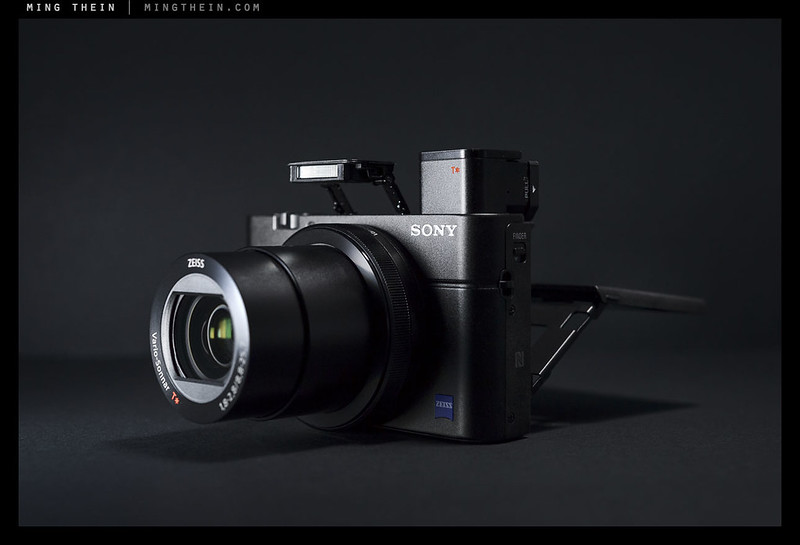

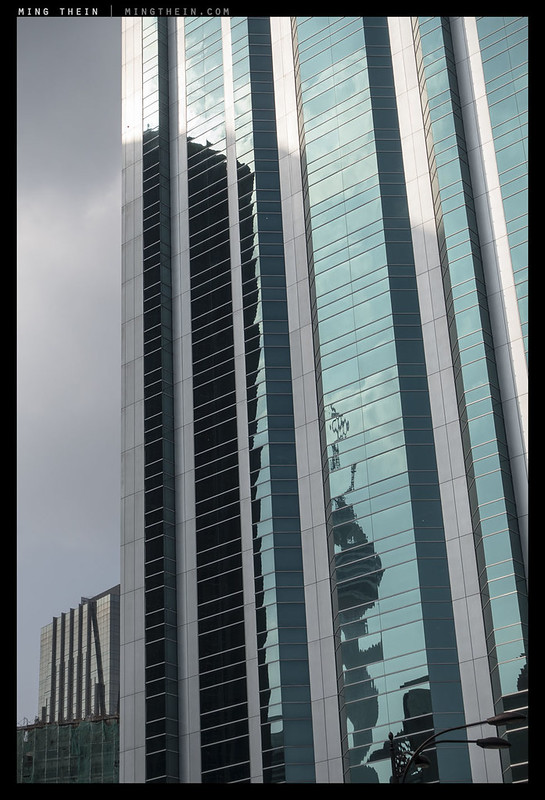
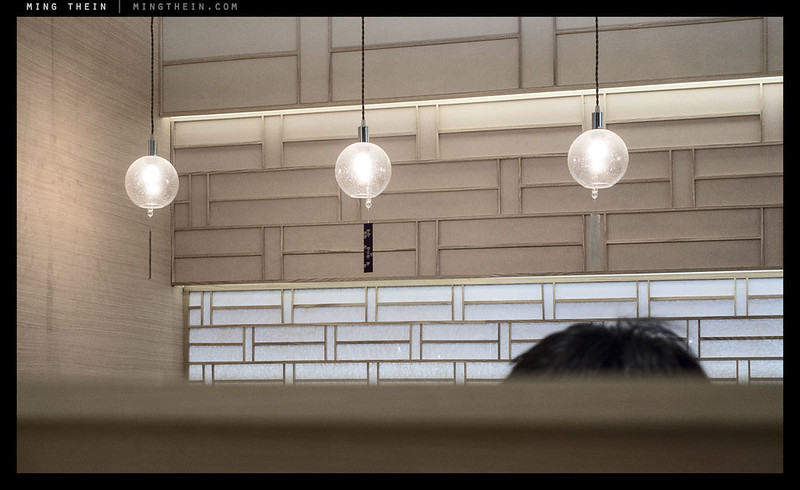
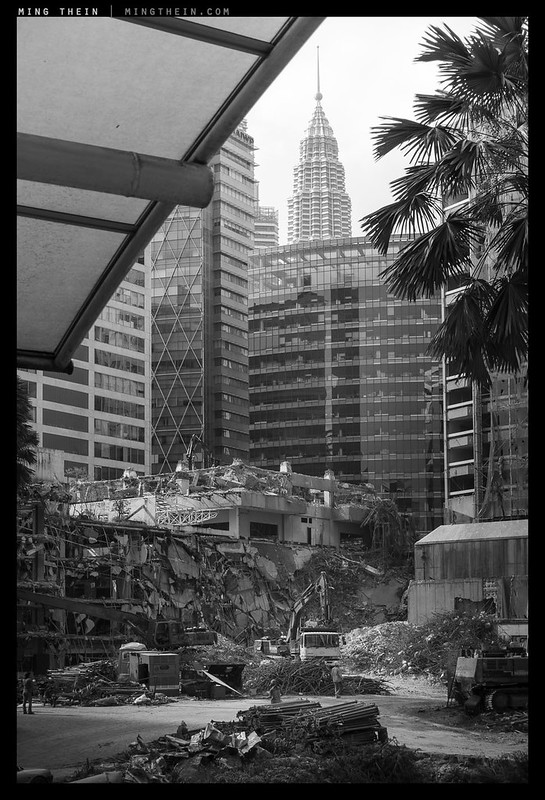
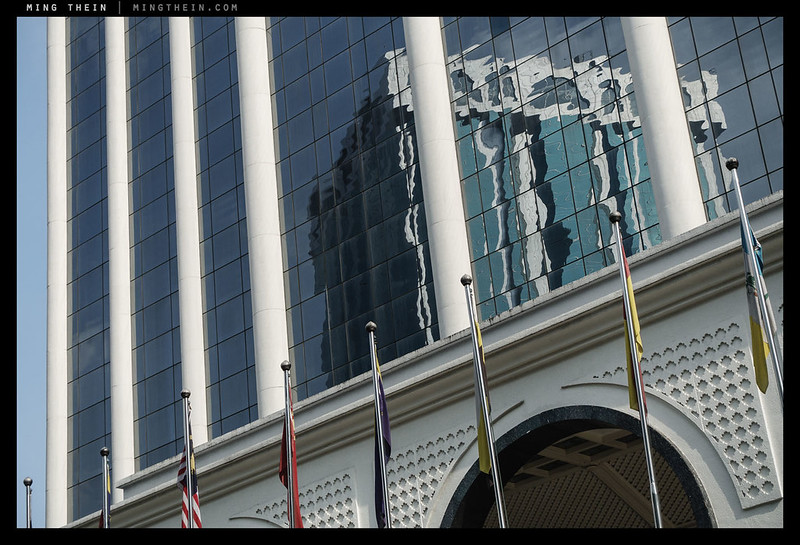
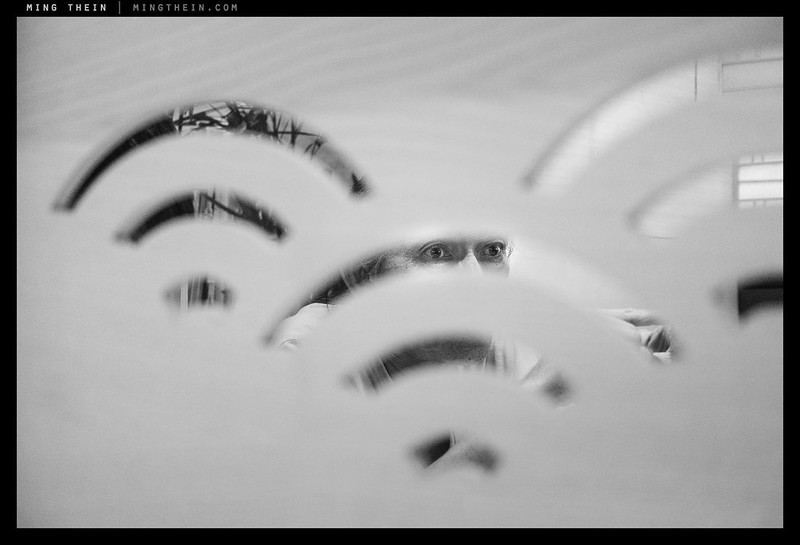
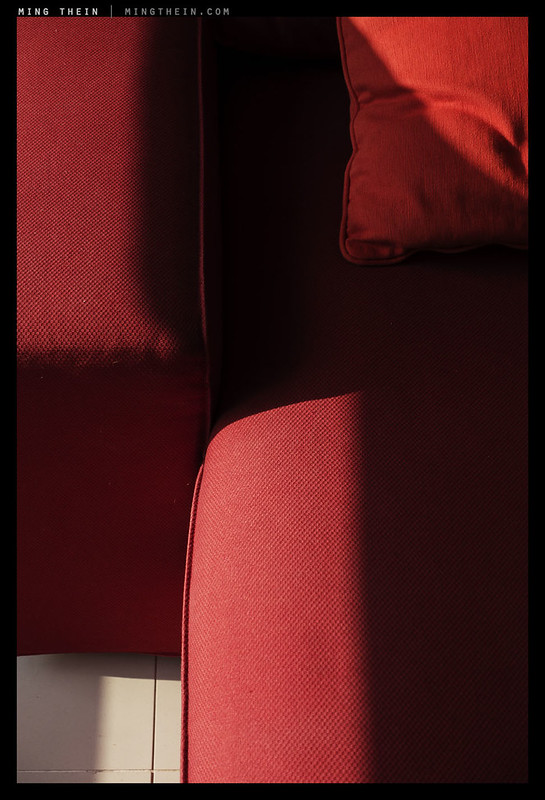
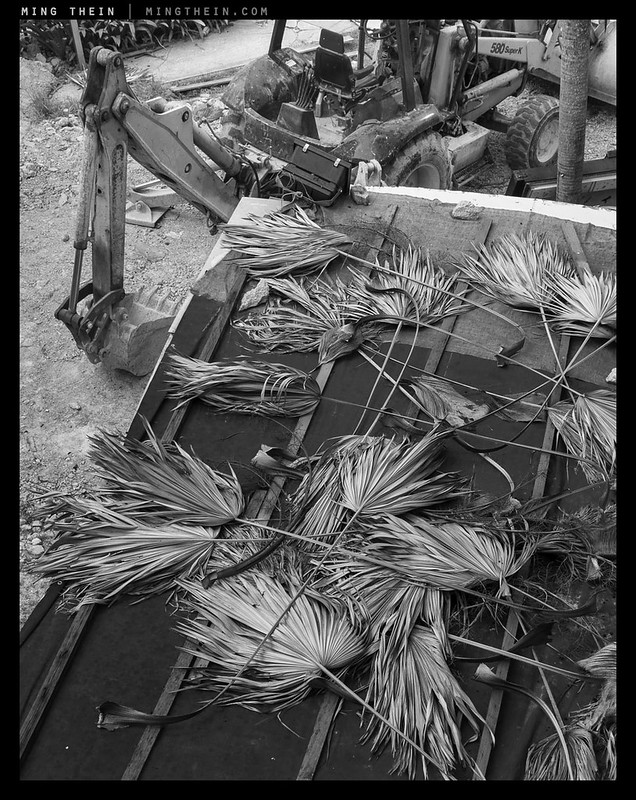
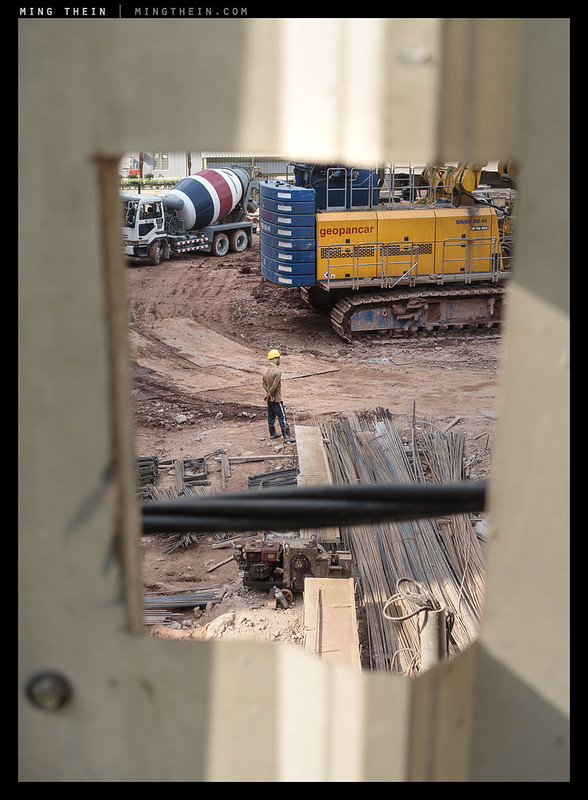
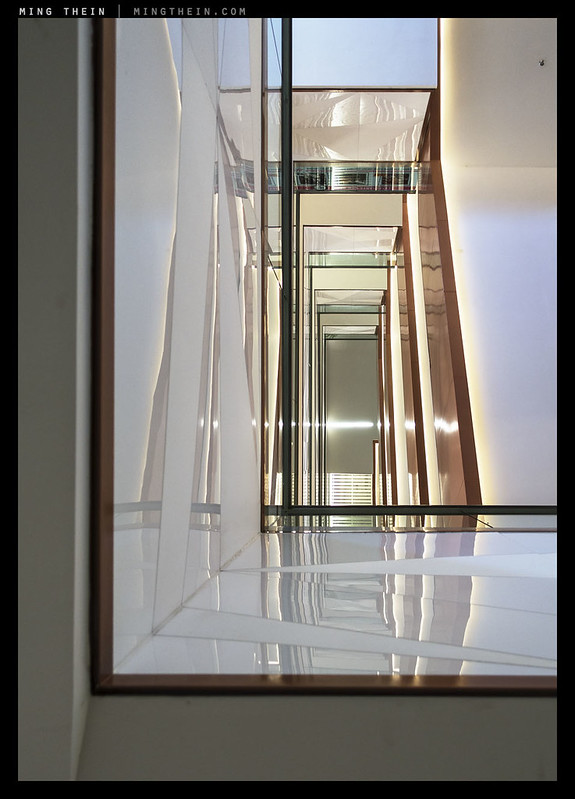

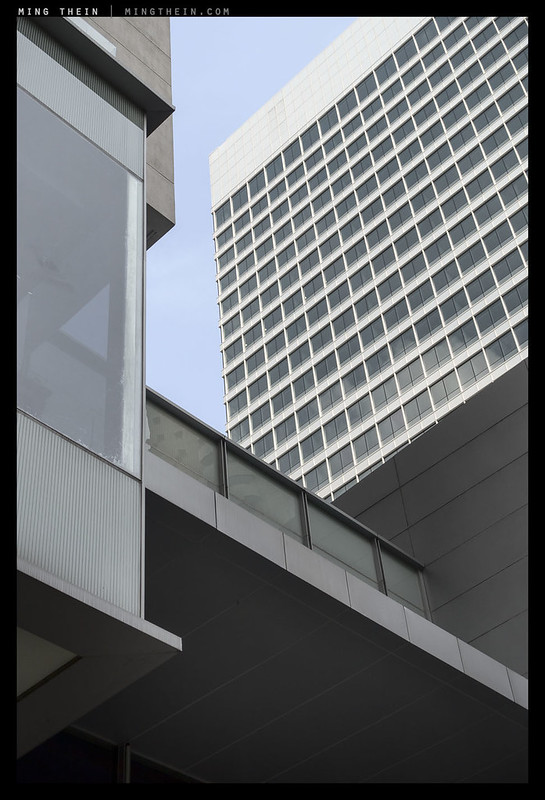

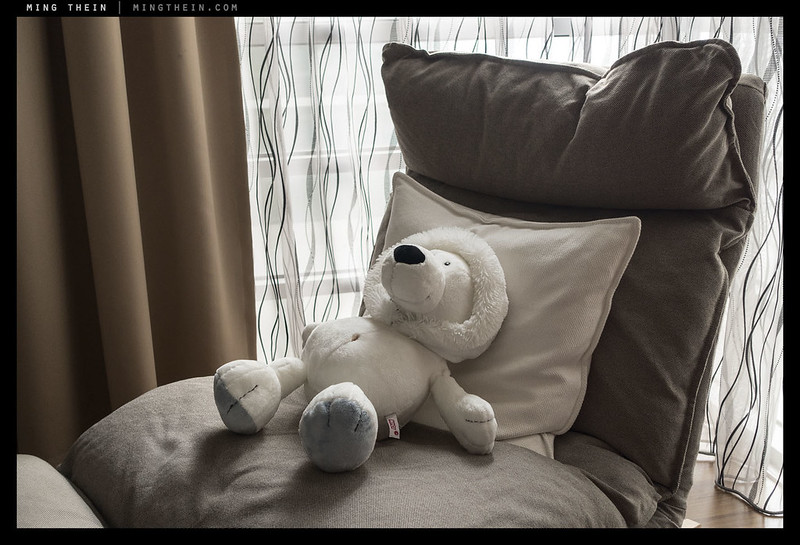






I am using a RX100 (Mk1), that I have recently bought, after various Canon Powershot S cameras (S100 — S120). The software of the Mk1 is terrible, it is a complete disaster and not usable at all. In 2012, the UI on the S110 was light years ahead of Sony. Do you have any idea of how the Mk1 software compare with the latest releases?
About the same. Sony menus are a disaster.
I know this has been posted a while ago, but I hope I can still get your opinion on the RX100M3. I just got the camera, love it and wanted to get a case for it. I read on nikoncafe.com that you were (or are) using the pelican 1010 case and it was a case I was thinking of getting. I’m simply wondering if the fit was too tight on the lens when the case is closed, which could lead to future damage.
Sorry, that must have been somebody else – I wouldn’t use a locking box for what is meant to be a quick draw camera…
Hi Ming, not sure if you have covered this before. If you had to pick between the RX100 iii and LX100 which would you chose? I am keen on a camera that I can take with me a lot to improve by photography skills. I had a DSLR before and due to weight it stayed home a lot!!
Depends on what you want to do with it. I have the RX100III because of the tilting screen.
Another excellent and balanced review, Ming. I’ve had my RX100m3 for a month, after using the m1 for some 15 months.
What I like (compared to the m1): tilt LCD, exposure zebras (in conjunction with spot metering), small but noticeable improvement in IQ across the frame, 24mm (not that 28mm was a problem), numerous UI improvements such as custom button at rear (I use this for AEL toggle), a switch to pop the flash, Fn quick menu.
What I can live with: the extra weight, which is for things like Wi-Fi & NFC which I don’t use. The pop-up EVF is also extra weight and I haven’t made much use of it so far but I’m sure I will.
I thought I would miss the tele end of the lens … the m1 went to 100mm vs only 70mm for the m3. But it hasn’t been an issue, partly because I have the RX10 which ranges from 24mm to 200mm 🙂
As you say, the m3 has a slightly larger shooting envelope than the m1 which makes it versatile with a capital “V”. And I’ll be selling my m1 for a reasonable price, which significantly reduces the cost of the upgrade.
Sounds like you’re happy, then. I never got a chance to compare the RX10 and RX100III side by side; do you notice any difference in image quality?
Until today, I never did any side-by-side tests. I distinguish the two cameras by function, rather than by IQ. They are both [slightly] better than the RX100m1 in terms of IQ and definitely by ergonomics.
I did some quick tests today. One subject with detail across the frame, tripod, same exposure, f2.8, then 24mm – 35mm – 50mm – 70mm, all processed using DXO defaults to generate a TIFF (part of my normal workflow). I realise that at f2.8, the RX10 is open aperture whereas the RX100 is stopped down. I’m not a lens tester but a casual look at the 24mm and 50mm images told me two things: the RX10 is always sharper in the middle of the frame and secondly isn’t so clear-cut at the corners.
Makes sense; both have design compromises – the RX10 because of the long zoom ratio and constant aperture, and the RX100III because of size/maximum aperture…
Have had this little marvel now for a couple and months and while it is not perfect (which camera is) I continually amazed by the versatility of this literally pocketable (front of my jeans) camera. The IQ and lens beat anything else I have ever used in this size and it really can play alongside the big boys (in my case the Leica M and Sony A7). As much as 28 is my most used focal length on the Leica I think for just all round versatility I would go of this as opposed to the GR. Great review
Ming, i ended up buying MIII, after leaving my MI behind at my niece place in London by mistake, using that good excuse I bought MIII and love it, just couple of weeks back, I was back in London and now I got both with me 🙂
So which do you prefer?
Love your review and also the pictures are astonishing ( I mean really good ) I did quite a research about good pocket-able compact camera’s ( only using internet and camera stores ) ( i’m not a pro, more a enthusiast)
I really felt in love with the Ricoh GR. The lates GR just has the best to offer, on picture quality and of coarse another way of shooting ( no zoom ) But it’s really made for taking pictures.. As well in your review, you only reviewing how the Sony is making pictures but the Sony RX100 m3 has lot’s of video quality.. I think that was for me the most important plus point to go for the Sony.. with it’s cinematic video quality ( only downside you can’t use an external mic 😦 )
I think Sony kinda broke the standard by combining good pictures and film in one small ( smaller than the GR) camera, do you agree? I’m curious why you don’t pay attention to it’s video possibilities? nowadays we can expect to have proper video and picture at once right? Th Ricoh GR doesn’t really pay attention to video options.
Greeting from The Netherlands
I’m not doing a video review. I’m a photographer. And the GR and RX100III have completely different purposes.
Ming, thank you for a great review! I’m currently struggling with the choice between the Rx100m3 and Ricoh GR for a pocketable camera. In your GR vs Nikon A article, you mentioned a number of annoyances with the GR. Have these been addressed in fw updates? Things like slow low-light af, aperture sticking in program mode and the red shifting all sound pretty annoying. I’m also wondering about low light shooting. Wide open F1.8 on the Rx100 is equivalent to F4.8 FF. F2.8 on the GR is equivalent to F4.2 FF. This theoretically gives less than half a stop of effective difference, and the Rx100 has IS. Which have you found to be more useful for low light shooting?
Yes. Most of the issues have been fixed with the latest FW, especially slow low light AF and program mode. I’d go with the GR.
How is the metering on this one? I found the original RX100 far to unreliable and constantly needing exposure compensation whereas most m43 cameras seem very accurate.
For live view cameras I just use the spot meter and exposure zebras – always perfect.
HI Ming, Ive never considered a Rx100 before, i’m looking for a pocketable compact for times when i don’t want to carry my Olympus EM1 & lenses. I know you must have had chance to use this MK3 for a while now and i’m wondering if you’d recommend this or your beloved Ricoh GR to fit the bill?
I do appreciate the fixed 28mm lens v the 24-70 zoom etc APSC sensor v 1inch sensor etc – but specs aside i’d really appreciate your thoughts.
Cheers
Colin
I prefer the Ricoh, but it depends on whether you need the zoom or not. I’m quite happy with 28mm, personally.
Interesting stuff as usual but all your images look way oversharpened on your website. The same images look fine on Flickr. Any fix for this? By the way what is your usual processing workflow? Cheers, Doug.
It’s the flickr downsizing algorithm, there’s no sharpening after downsizing but I still cannot compensate for this. Processing workflow is not exactly straightforward – I’ve been asked so many times I produced a detailed video for this.
Thanks for your excellent review and thoughts on the camera. Can you maybe touch on the differences, preference between the rx100 m3 and the panasonic GM1?
I know you have used both, and really value your opinions.
Interchangeable lenses, sensor size, EVF or not – they’re not really comparable other than external size and perhaps price. The RX100III has to be evaluated as a complete solution because it has no possibility for expansion. The GM1 is a system camera, albeit one that doesn’t make sense as the center of an extensive system because of ergonomics, lack of EVF, hotshoe etc.
Ming, have you already tried Canon PowerShot G1 X Mark II? How would you compare with RX100III?
Thank you, Petr
Nope, haven’t used it.
Nice review and great shots too. It looks like it has all the bells and whistles but too space age for my liking.
I’ll stick with my ‘scalpel’. but a really neat set of pics Ming.
Thanks Dan.
Ming, not related to M3, are you going to review Sigma DP2Q? I hope Sigma is sending you one for review.
We shall see. Time is in rather short supply for me now…
Ming, some of the pictures in this post are stellar! A testimony for your ability to get the best out of any camera. Those among us who spend sleepless nights over ‘inferior’ IQ of smaller sensors should wake up, take inspiration from you and learn to make the best pictures out of the gear we have.
Thank you.
I actually just bought a used rx100 mkI based off of your original rx100 review and I am really liking it so far. I bought mine used for 290. How much do you think the lens and evf upgrades are worth over the mki?
Impossible to quantify. It depends if you can see the difference, I suppose.
Two quick thoughts after using the RX100 III for about a week. First, it already broke. It won’t turn on, so it’s going back. Second, the pop up viewfinder is TINY! Kind of thinking it’s just too small to really be all that excited about. There is actually metering information in the viewfinder…and that is VERY TINY. If you don’t have good vision, forget about reading the letters and numbers. Kind of rethinking if it’s really an upgrade over the RX100 I already have.
I agree with you on the finder: in general, it’s not as useful as I’d have expected. Not so much because of the size as because it isn’t that bright for daylight use. Though yes, it could be larger…
The lens on the other hand is significantly better, especially at wide and in the corners.
Ming – the ergonomics are the deal breaker for me. I had the original for about a week. I have large hands and I just could not hold a secure grip and manipulate the camera without fear of dropping the thing. I appears nothing has changed.
The Franiec grip might help. I found my MkI very slippery until installing one. That said, I agree there are limits to these things especially if you’ve got large hands – there’s no physical way to make the buttons bigger, for instance. Given the III and I are the same size, no, nothing has changed.
Thanks for the great review, Ming. One comment about depth of field: given the same aperture, sensor size, and image framing, all lenses, regardless of focal length, have the same approximate DOF. Basically, it is a misconception that longer lenses have shallower DOF; they do so only at the same subject distance, not with the same image framing. So, you should use the RX100’s widest aperture, not its longest focal length, to calculate the equivalent aperture (in “full-frame” terms) of the shallowest DOF available with the RX100 III. Of course, this means the shallowest DOF is available only at the wide end, which may not be the ideal range in which to enjoy shallow DOF. Nevertheless, with the RX100 III, that calculation works out to an aperture of approximately 4.9 in full-frame terms.
That’s not quite right. DOF is a property of aperture and real focal length – so yes, a 20mm 1.8 on FF or 1″ will have the same DOF at the same distance. It perceptually changes for different sensor sizes because you need a different focal length to match framing/ AOV.
Thanks for your write-up. How do you find the RX100 III compares with the GM1 and kit lens? Both in terms of shooting experience and image quality? The Sony’s high megapixel count (considering the sensor size) turns me off. I haven’t had an opportunity to try the RX100 III yet, but since I already have an EM-5 and several m43 lenses, the GM1 looks like an attractive option.
Hmm, tough call – I’d probably take the GM1 because of the interchangeable lens option, though ultimate image quality is actually fairly similar. Them RX100III might give you a bit wider shooting envelope though because of the faster lens and face-bracing EVF. I don’t have a GM1 to compare directly though.
Had thought about replacing my GM1 with the RX100 lll, but just sent it back. Higher ISOs on the Sony are no match against the m4/3s sensor. The Sony lens is kinda soft until stopped down..so what’s the point. The only advantage is the slightly small package and the flip-out screen. The EVF was kind of a pain, too, and a bit fiddly. Plus, the video on the GM1 is outstanding.
Lots of sample variation on the RX100 lenses, in my experience – some are definitely softer than others. The sample I have appears to be pretty good, though.
Ming, you’ve probably seen this. Thanks for the review.
http://www.dpreview.com/reviews/sony-cybershot-dsc-rx100-m3?utm_source=newsletter&utm_medium=email&utm_campaign=generic
Yep, haven’t had time to read it though.
Thanks for the review. I find your reviews, like this one, are the best out there, at least among the freely available ones. The discussions are very informative and thorough. The images are awesome. Don’t know if there’s any one else’s reviews that have the same qualities in both discussion and image.
Thanks – if there are, I’ll just have to do better!
I’ve sold my Micro Four Thirds camera just last week, and intend to purchase a mk. iii this week (and will use your referral link, of course 🙂 ) Hard to justify hauling a GH3 body everywhere I go especially when I’m shooting more and more film. I want good IQ and portability above all else, so why not a mk. iii and my FM2? Makes the most sense, in my mind.
Thanks for the support – and yes, it does make sense…if you’re shooting at base ISO, optimum apertures on a tripod, you’ll actually have more resolution with the III anyway – 20MP plays 15…
Thanks Ming, great review!
No problem.
Hi Ming,
I have a question: Does this little camera also suffer from the “F4 in shutter priority” default?
What I mean is this: In recent cameras, Sony has set the shutter priority to give you an aperture of F4 and raise the ISO… I hate that! I found that true for the NEX 6 and the A7 I looked at.
I hope it’s clear what I mean… e.g. I set shutter priority with 1/125 sec. to make sure nothing is blurred. Every camera would normally use the lowest possible ISO and also the lowest possible aperture – not the NEX 6 and the A7! They would try to set an aperture of F4 and would even raise the ISO to get there. Can you please test the Rx100 MkIII and tell us if Sony also implemented that “feature” here?
Thanks,
Mark
Just tried it; doesn’t appear to be the case. Mine opens up the aperture first, then only raises the ISO. Honestly though there’s so little DOF control you might as well just shoot program though – that’s what I’m doing.
Ming, can you elaborate or clarify again why you are using Program mode when you are (I suspect) generally a manual or aperture priority shooter? I generally try to mimic your settings when using the same camera, and I was wondering if it made sense to switch to P mode on my RX100 Mark I or if you are only using P on the Mark III for some special reason.
Yes. There’s effectively no DOF control on these small sensors anyway – wide open doesn’t give you much isolation, and stopping down beyond f5.6 introduces diffraction. So, there’s not much point; I’d rather have a faster shooting experience with one less parameter to set.
Ming, your photographs from this shirt pocket camera (without a big grip that would preclude slipping it into your shirt pocket) are nothing less than spectacular. If Sony hired you to take photographs for them for the massively immense shirt pocket buyers ad campaign ( students, parents of kids, pros who only want a shirt pocket camera, etc) ,then Sony stock and sales would skyrocket upwards! Sony, are you listening? Ming, you might not be aware of the fact that this series camera has become the No. 1 underwater camera for the scuba/snorkeling upgrade crowd that use underwater housings. I believe that that’s why it doesn’t have a touch screen. [spelling tiny/tint] 😉
Thanks – but sadly, Sony isn’t interested, and frankly Sony Malaysia is a bit of a disaster. I requested an RX1 loaner for review…and a year later they told me they still didn’t have a unit for media – despite all of the other magazines in the country already surviving the pass-around and publishing articles. I was once hired to do a workshop for them – it took 11 months to get paid.
I don’t think the touch screen would make a difference for underwater use so long as you could still make all of the required changes through physical controls. I’d assume EVF + housing isn’t going to work though because of the relatively low eye point of the finder. Still, I can see why…small, fast, large sensor, fast lens etc. Just needs a way to trigger strobes.
Nice review. I bought the Mark II a couple of months ago and while it’s a nice camera, I kind of wish I had waited a bit longer(but at the time the Mark III wasn’t announced), but then technology is a waiting game. I was thinking about getting the EVF for the Mk. II down the line. Looks like a good accessory.
There will always be another camera…I wouldn’t worry about it too much if I were you. Ultimately they are there for making pictures!
Hi Ming, beautiful review as always, and I add that I love the product photos you take (they really “invite” people to want the product).
As another reader above I have a little dilemma: to buy or not to buy an OVF for my new Ricoh GR. I live between Venice and mountains, and on summers days I have found myself struggling to look at the screen of that tiny supercamera..
Thanks. I personally have an OVF for the GR – the Voigt 28/35 mini-finder – but almost never use it because it’s not easy to holster anymore. On bright days…squint 😛 Worked for me so far, and I live in the tropics…
Wise advice, then I’ll save some money 😉 thank you and keep up the great work! (And thanks again: your Ricoh GR review pushed me to buy it. I’m sorry for the trouble you had with your stolen photo)
You can always get a Hoodman HoodLoupe for it.
That would be larger than the camera!
For sure 🙂
Hold on….update/successor of the GR and Coolpix A is in the pipeline for sure 😉
Excited on the 645Z review (huge bummer for me no 16 bit raw files!!!) in comparison to the D810 which will be released tomorrow….the King is dead, long live the King. 🙂
How much better/larger you gain in terms of printing due to resolution, you lose in low light…etc….
GR: definitely. A? Not so sure. But it’ll be at least a year til the next GR; 2-2.5 years seems to be the average cycle. 645Z: so far, I’m not missing 16bit. D810 – this is going to be an expensive month…
You don’t lose anything in low light with the 645Z. Actually, you gain a stop at the pixel level over the D800E, and a bit more if you take the extra pixels into account.
THX…..but the d810 will have further lowlight improvements than the d800e…so the gap between the d810 and the 645 z will may be even closer than 1 stop….;) time will tell….NO! You will tell us…;) its even better!
But the second thing i don t like about the 645 z is that the used focal plane shutters …so its dlsr like…no leaf shutters typically used in MF cams P1,Hassy, Leica….which would justify the limitation of 1/4000 shutter speed (max of leaf shutter mechanisms, for focal plane its 1/8000)….so 1/8000 is missing….imo 😉 Nevertheless nice to get MF Digital for less than 10000 bucks….
Actually, I probably won’t. Unless something drastic happens, it’s unlikely the D810 will make enough difference to justify upgrading – remember most of the time I shoot it at base ISO under studio conditions; the 645Z will become my reportage camera.
You’re mistaken on the FP shutters: for a shutter the size of the 645Z’s, that’s the fastest it’ll go. The rest with leaf shutters top out at 1/1600s for full aperture – or less. And you’ve got a lot less flexibility in available light. It’s one of the reasons why I didn’t use the Hasselblad as much as I thought I would.
Really??? Oc fine sorry for being wrong…i was confused…digital mf mostly common 16 bit raw files, shutter speed 1/4000 (leaf shutters), exposure time 1/10000, flash sync 1/1600 if you are using leaf shutter lens….hmm…645z 14 bit raw files, 1/4000 focal plane shutter, exposure time ???, flash sync 1/125 but its logical ….for the third of the price of a p1…it has to come from sth…..so less features/technically advanced 645z….;)
Finally, i thought it will be the other way around mf for studio and d800e or/810 for reportage slightly less bulk, weight, smaller lens etc.
Have fun with your new toys&tools…keep shooting for bread and butter!;)
16 bit yes, but most record at most 15 real bits of data. You can still get great color from 14 bit if the tonal range is properly allocated – i.e. the A/D conversion is well done. Yes, the CFV puts out better *native* color than the D800E, but I can easily get there – it also has less latitude and a very small shooting envelope.
I’m not sure where you’re seeing 1/4000 leaf shutters. There’s certainly no leaf shutter that will do 1/4000s AND f2.8. If the leaf shutter speed really is 1/4000s, you should also get flash sync to this speed – the max is 1/1600 for a reason.
Different tools at different prices for different purposes. Good for you if you can afford a P1, I certainly can’t – and I know don’t need the extra features of one one even if I could afford it.
And finally, if you do the same thing as everybody else, you’ll get the same result. Why would you want that?
Nikon’s seemingly arbitrary generational ergonomic fiddling still very much alive: the three-way metering mode switch has been dropped in the D810!
That’s a shame – I must be one of the few people who used that quite a lot…
Me too. Can’t see any good reason for moving it, either, as doing so has also displaced the BKT button.
I actually never used bracketing, so that button wasn’t important – personally. I suspect the move was to make the controls more similar to the D4, but that also doesn’t make sense as we’re down one joystick.
Likewise to be honest (there’s so much dynamic range that bracketing is generally unnecessary) but it’s a shame to have less physical controls when the body itself hasn’t gotten any smaller. Interested to see if the advertised “superior vibration suppression” means a noticeable improvement in shutter action; never been much of a fan of the D800’s (compared to the F6/D700)…
‘Flat’ Picture Control option (even more neutral than ‘Neutral’) added for getting the most out of RAW files! Silly little feature, but I hope everyone else follows suit.
The F6 has one of the best, if not the best mirror mechanisms of any Nikon SLR. I think it has something to do with the complex mirror movement geometry and tungsten balancer weight – which I don’t think was ever used again.
‘Flat’ picture control: PCs don’t affect raw files. They just give you a guide as to what’s there. I’ve long been setting lowest contrast/ saturation and increased sharpening from the basic setting as long as it’s been an option; it gives me a good idea of how much latitude I’ve got and whether I nailed focus. The actual RAW data of course doesn’t change; this is just the jpeg preview.
Indeed. As I understand it, the new ‘Flat’ option is for precisely that purpose – lowest possible contrast/saturation in the jpeg preview, so the histogram should closer reflect the RAW file.
New *base* ISO 64 too, for what that’s worth…
Not much. The pull 32 option might be useful, but it’s only 2/3 stop below the old pull 50 – which is actually well within file latitude. If anything, I want as much shutter speed as I can get…
My understanding of flat is that it’s meant more for video. It makes a low-contrast picture that’s more amenable to color grading.
I’d imagine you could do the same with the normal picture controls…it’s what we used to do when the videos were still shot on a D600 (and do now with the E-M1’s color options).
Man, sucks to have all that haze over the city
The 1inch sensor is becoming more and more a compelling option. I’m just about to buy a 70-200 f4 (I’m in need of a tele and this paired with a GR is a perfect combo….) and paused to consider the RX10. It covers everything I need and gives enough resolution (for people who aren’t printing massive or ultraprinting) in a rather convenient package. It really shows how poorly Nikon marketed their 1 system and not understanding the potential.
Interesting comment above – I’ve also been hunting for a Voigtlander viewfinder and 200 euros for that vs 700 odd euros for an rx100m3 has definitely put my plans on hold to think about what i need. As a gadget the M3 is very cool as your first picture illustrates!
Yes – the GR/ 70-200/4 combo is very flexible; I shot that most of the time in Havana. Not sure I’d go with the RX10 because of it’s inability to track moving subjects very well, and optically the 70-200/4 is significantly superior.
I agree for now the flexibility of DSLRs nudge it ahead for now. If Nikon crack some major design flaws with the 1 system and a few more ‘pro lenses’, the whole tracking issue becomes non existent and it really could be the best mirrorless system to have. but it’s Nikon and they won’t!
Haha, sad but true.
Hi Ming,
This is a great review of a camera line I love. I would to know if some m1 frustrations have been fixed.
For the lens, does the m3 exhibit corner color cast like the m1? On the m1, there are sometimes a magenta cast that creeps in the corners on wide.
How responsive is the m3 vs. the m1? The M1 requires me to “please wait” for the camera buffer to empty after many shots or for the camera to finish recording a video. Also, during the “please wait” time, there’s not much you can do with the camera aside from: 1- having it AF and shoot again or 2- pressing the OFF button and having the camera shut down (retract lens) only after “please wait” time is over.
Thank you 🙂
I didn’t see any corner casts, but it appears Sony’s raw file pre-processing is getting more aggressive these days – which might have something to do with it.
There’s still ‘please wait’ time, but subjectively it seems shorter. Not having the M1 anymore to compare directly, this may not be that accurate.
Thanks for the great read and photos Ming.
Between this and the GR, which would you pick to go along with a DSLR + 70-200?
GR because I’ve already got one, which is good because if I didn’t, it would be very difficult to choose between them.
Great review Ming. Your information is practical and accurate. Might need to look at the RX100 III.
And a better deal now the IV is available…cheaper too.
I just got my M3 2 days ago, and am assessing it against the M2 (which I will eventually sell). Big fan of these cameras, but agree that the screen mechanism is slightly flimsy compared to M2. Also I seem to be able to get more latitude out of the raw files with the M3.
I prefer the new FN button onscreen display vs the old version, but the thing which would make this camera perfect for me would be a responsive touch screen as good as the one in the Lumix GM1.
Agree on the touch screen – I found myself poking at it more than one wishing that I could easily change settings that way…
It seems to make decent images…but man is that camera ugly.
I suppose whether that matters or not depends on whether you want to pose or make images with it…
An excellent review. I was just about to order the optical viewfinder for the GR and still may. But this opens up a whole new panoply of pros and cons. Thanks for a great review, Ming!
No problem Roger – a decent optical finder for the GR (the Voigtlander, or the Zeiss) will run you probably 30-50% of the cost of this camera…you could pay a bit more and get 24-27mm, and 29-70mm to go along with your GR. Tough choices, eh?
Indeed, tough choices. I’ll wait until the Panasonic LX-8 hits the shelves (and the reviews)…
Can’t say if I’ll be reviewing that or not – depends much on the spec…
Latest rumors (and they are just rumors, I know…):
“Latest rumors suggest that the upcoming Panasonic LX8 camera will use same sensor as recently announced Panasonic FZ1000 camera, take a look at the other rumored specification of upcoming camera…
Panasonic LX8 Rumored Specification
20.1MP 1″ High Sensitivity MOS Sensor
24-90mm f/2.0-2.8 Leica lens
built-in 3 stop ND filter
4K QFHD Video Recording at 30 fps
3.0″ Swivel touch screen with touch to focus and capture features
Built-In Wi-Fi Connectivity with NFC
HYBRID O.I.S. 5-Axis Image Stabilization
Light Speed AF with LUMIX DFD Focus”
If that’s all going to be true, it’ll be quite a step-up from the LX7 and steep competition to the other high-end compacts. At a rumored price of USD 899. But let’s see what will emerge… We should know more by 16 July…
There’s a lot of marketing-speak in there, but fundamentally it sounds like much the same camera with a slightly slower but longer lens, touch screen, and 4k – the RX100III has an automatic ND filter – not that most buyers of the camera would know how to handle or store 4k files…
Critically though – no EVF?
There are rumors pointing to an EVF on the LX8 as well.
I’d be curious to see how much their design deviates from the RX100III – there’s only so many places you can physically put all of the controls and gubbins…
As tasty as the rumored LX8 specs seem, M3 is already stretching pocketability to the max, not sure if the additional 20mm, OIS and 4K are worth the extra bulk for a camera that’s meant to go anywhere. Unless LX8 blows M3 out of the water in terms of IQ.
It’s hard enough to “subconsciously assess it for what it’s lacking or where it falls short against much larger and more fully featured cameras”, now I have to measure it against the rumors LX8 specs, so I’m just going to enjoy M3 for what it is for at least a couple of weeks first.
I think that’s a sensible way to go. Now if only the GR would have a built in finder…
The minute I saw the first set of images tagged RX100 III in your Flickr collection I wanted to read the review. They are incredibly good. I’m still prone to looking for salvation in camera choice rather than in improvement in my own skills. Unrealistic, yes, but for some reason irresistible. Fortunately, I can’t afford anything at this price point, thus don’t have to make the choice between this camera and the Ricoh GR. I know it’s your ability coupled with your choice of subjects that combine to make these photos as striking as they are — but, damn! I want that camera!
We’re all guilty of that. I just took delivery of my 645Z – I definitely don’t need it, but that doesn’t stop me from wanting it…
Images would have been better with better light – it’s really hazy in KL at the moment because Indonesia is burning their forests again and the winds are carrying the smoke north. If you do pick one up, please use one of my referral links 🙂
A dose of reality as followup: now that a Flickr group has appeared with 140+ images from the RX100III it turns out to be not the magic camera after all. 2careless has been posting stellar shots, as have a few others. But, all in all, the quality range in that group appears to be neither better nor worse than any other random sample. Now I can exhale. As in sigh of relief.
As always, it depends on the photographer. 2careless was one of my students in Melbourne 😉
Ming, thanks for another excellent review. While initially skeptic about the quality of the Sony/Zeiss lenses, I’m amazed at how outstanding these lenses have been over the years (I still use an old Sony F717 for that reason alone). Your review has definitely moved this camera to the top of my short list of must have cameras.
No problem. The lens in the I and II left a lot to be desired, but the new one is quite a tangible improvement.